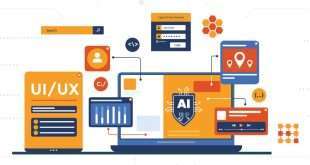In the fast-evolving world of technology, two key concepts, Edge Computing and Progressive Web Apps (PWAs), have emerged as powerful tools to enhance performance and user experience. Embracing these innovations allows businesses to deliver content and services more efficiently, taking advantage of proximity and reducing latency. In this blog, we delve deep into the realms of Edge Computing and PWAs, exploring how they work together to optimize performance and elevate the user experience.
Understanding Edge Computing: Redefining Proximity
Edge Computing is a paradigm shift in how data is processed, stored, and delivered. Instead of relying solely on centralized cloud servers, Edge Computing brings computation closer to the source of data and the end-users. It utilizes small-scale data centers, known as “edge nodes,” situated geographically closer to the devices and users. By reducing the physical distance data must travel, Edge Computing significantly diminishes latency and accelerates data processing.
Edge Computing empowers devices and applications with real-time capabilities and enables them to operate even in offline or low-connectivity scenarios. This proximity-driven approach revolutionizes how we experience digital services, making them more reliable, responsive, and efficient.
The Rise of Progressive Web Apps (PWAs)
Progressive Web Apps (PWAs) are web applications that combine the best of both worlds: the reach of web pages and the functionality of native mobile apps. PWAs leverage modern web technologies to offer a seamless user experience, regardless of the device or network conditions. They can be accessed through a web browser, bookmarked on the home screen, and even function offline.
PWAs are designed with a focus on responsiveness, delivering a consistent and engaging experience across various devices, whether it’s a smartphone, tablet, or desktop. Their ability to adapt to different screen sizes and orientations makes them an excellent choice for businesses aiming to cater to diverse audiences.
Merging Edge Computing and PWAs: An Unstoppable Force
When Edge Computing and PWAs unite, they create a dynamic duo that can revolutionize how we interact with digital content and services. By deploying PWAs on edge nodes, businesses can further enhance their performance and responsiveness. Let’s explore the benefits of this powerful alliance:
- Reduced Latency: Placing PWAs on edge nodes shortens the distance between the user’s device and the server, resulting in minimized latency. Users experience near-instantaneous response times, which is crucial for critical applications and content delivery.
- Enhanced Reliability: Edge Computing ensures that even if the central cloud server experiences downtime, the PWAs hosted on edge nodes can continue to function. This seamless switch to edge resources enhances reliability and maintains uninterrupted services.
- Offline Functionality: PWAs are designed to work offline, and when combined with Edge Computing, they can access and process data stored locally on the edge node. This capability enables users to interact with the application even without an internet connection.
Architectural Insights: Edge Servers and Caching Mechanisms
In the Edge Computing and PWA alliance, edge servers play a vital role. These servers are strategically located close to the end-users, optimizing the delivery of content and services. Additionally, caching mechanisms come into play, ensuring that frequently accessed data is stored on the edge nodes, reducing the need to fetch it from the central server repeatedly.
PWA Tutorial: Building Your Progressive Web App
Now that we understand the power of PWAs and Edge Computing, let’s take a step-by-step approach to building a Progressive Web App:
Start with a Solid Foundation:
Design your PWA using modern web development technologies such as HTML5, CSS3, and JavaScript. Ensure your app is mobile-friendly and responsive to cater to a diverse audience.
Implement Service Workers:
Service workers are essential for PWAs, as they enable offline functionality and caching of critical resources. They act as intermediaries between the app and the network, handling data caching and fetching.
Responsive Design and Layouts:
Embrace responsive design principles to ensure that your PWA adapts seamlessly to different screen sizes and orientations. This approach enhances user experience and accessibility.
App Shell Architecture:
Implement the app shell architecture, where the basic user interface is cached for quick loading, while the content is dynamically fetched from the server. This approach enhances the perceived performance of the app.
Push Notifications:
Integrate push notifications to engage users and keep them informed about updates and relevant content. Personalized push messages can significantly improve user retention.
Performance Optimization:
Compress images, minify CSS and JavaScript, and optimize loading times to create a smooth and fast user experience. Users expect quick responses, and performance optimization is key to meeting these expectations.
PWA Website Examples: Showcasing Success Stories
To further illustrate the potential of PWAs, let’s explore some real-world examples of successful PWA implementations:
- Twitter Lite: Twitter Lite is a lightweight PWA version of the social media platform that loads quickly even on slow networks. It offers push notifications and offline functionality, enhancing the user experience for millions of users.
- Starbucks: The Starbucks PWA offers customers a seamless ordering experience, enabling them to browse the menu, customize their drinks, and place orders even in areas with poor internet connectivity.
- Forbes: Forbes’ PWA provides readers with fast-loading articles and a smooth reading experience. The offline capabilities allow users to access previously cached content without an internet connection.
Unleashing the Potential: Edge Computing and PWAs in the Future
The collaboration between Edge Computing and PWAs is an ongoing journey with endless possibilities. As technology evolves, we can expect even more remarkable advancements, including:
- Augmented Reality (AR) and Virtual Reality (VR) Integration: Combining Edge Computing and PWAs with AR and VR technology will open up new avenues for immersive and interactive experiences, transforming industries like gaming, education, and retail.
- AI-Powered Personalization: With data processing capabilities at the edge, PWAs can leverage artificial intelligence to deliver hyper-personalized content and recommendations, tailoring the user experience to individual preferences.
- Seamless Multi-Device Experiences: The seamless synchronization of user data and preferences across devices will be possible through the integration of Edge Computing and PWAs, ensuring a consistent experience on any connected device.
Final Words: Embrace the Proximity Advantage
Edge Computing and Progressive Web Apps have the potential to revolutionize the digital landscape, enabling businesses to optimize performance and elevate user experiences. By harnessing the power of proximity, reducing latency, and providing offline functionality, this alliance is reshaping how we interact with technology. As the future unfolds, we can expect Edge Computing and PWAs to unlock even more incredible opportunities, enriching our digital journey like never before.
Commonly Asked Questions:
1. What makes PWAs different from traditional web applications?
PWAs offer several advantages over traditional web applications. They can work offline, deliver faster load times, and provide a seamless user experience across various devices. Additionally, PWAs can be installed on the user’s home screen, giving them app-like access without the need to visit an app store.
2. How do PWAs enhance user engagement?
PWAs engage users through push notifications, enabling businesses to send personalized messages and updates directly to the user’s device. This feature increases user engagement and retention.
3. Are PWAs compatible with all devices and browsers? Y
es, PWAs are designed to be compatible with a wide range of devices and browsers. They are built using standard web technologies and can adapt to different screen sizes and orientations.
4. Can PWAs work without an internet connection?
Yes, PWAs can work offline or with a limited internet connection. They can store essential data locally on the user’s device, allowing users to access the app’s core functionalities even when offline.
5. How do Edge Computing and PWAs work together to optimize performance?
Edge Computing reduces latency by placing PWAs on edge nodes, closer to the end-users. This proximity-driven approach ensures faster data processing and content delivery, resulting in an enhanced user experience.
 webfily
webfily



